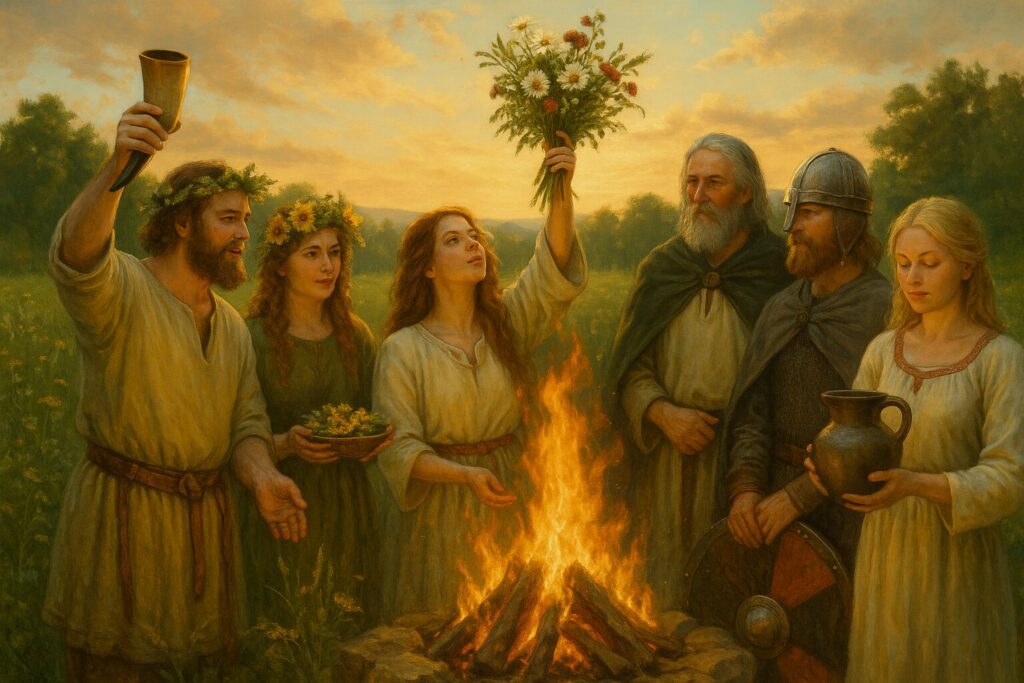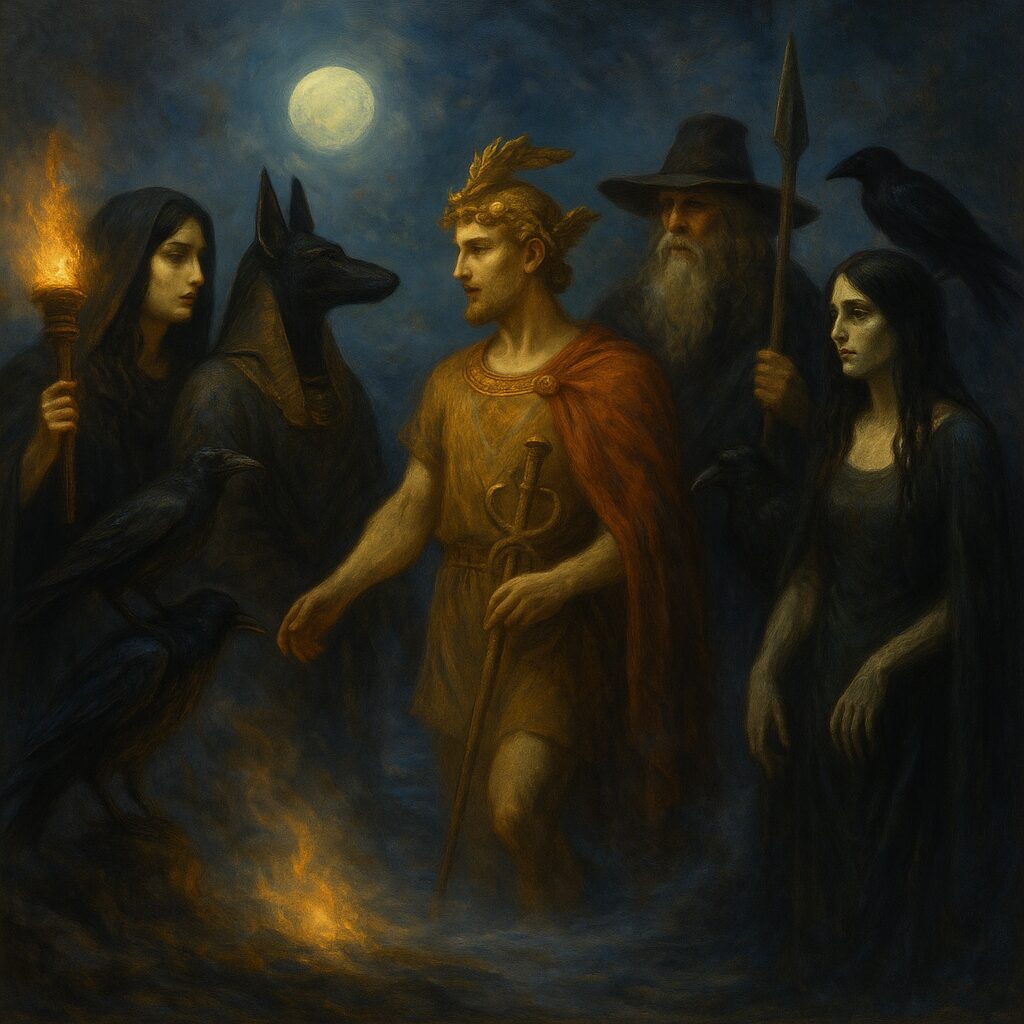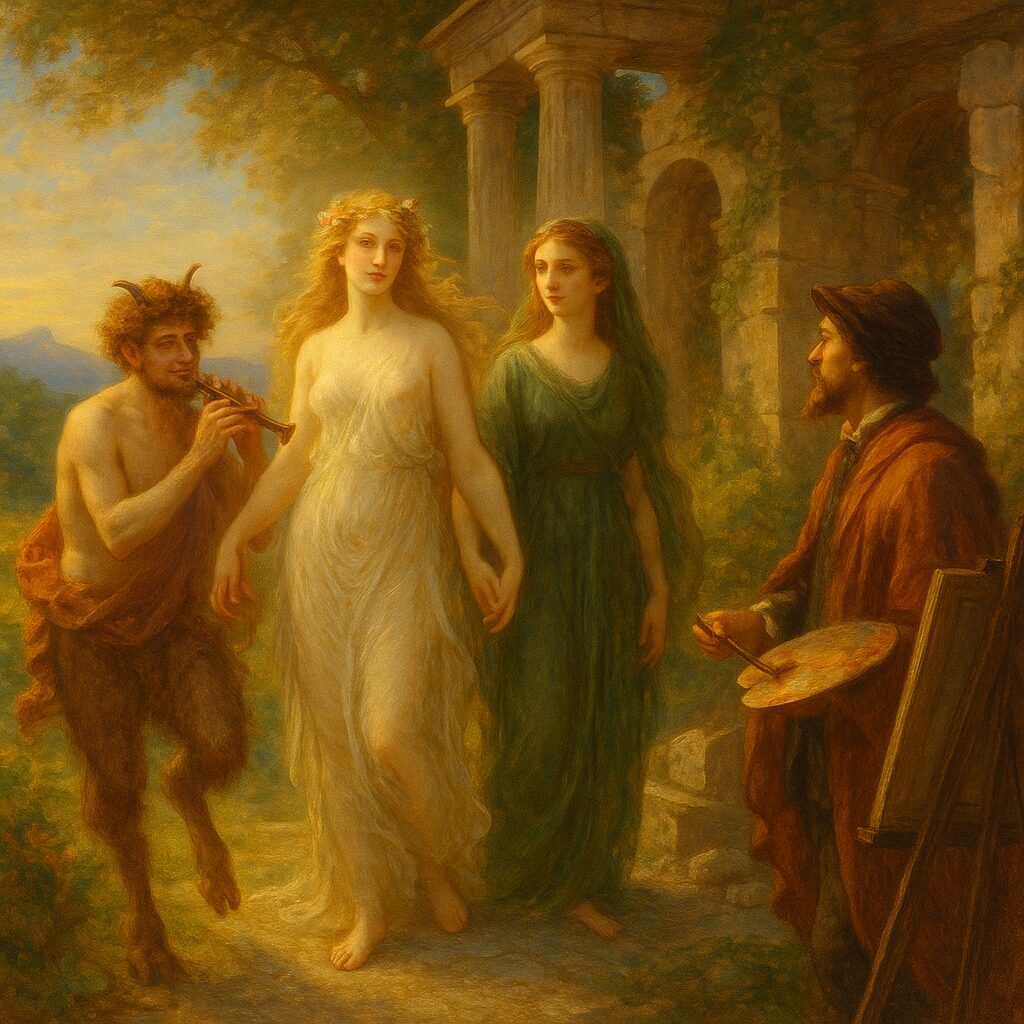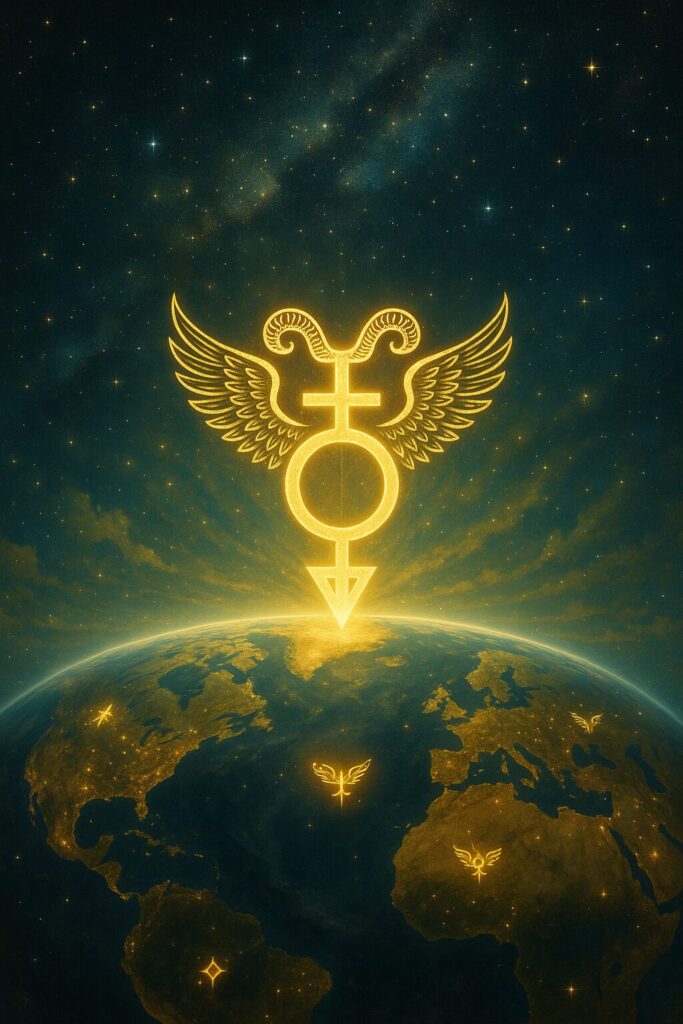Reweaving the Sacred: On Paganism and Its Neopagan Revival

The word pagan began not as a confession of faith but as a description of place. In the Latin of late antiquity, paganus meant “country-dweller,” the rustic outside the city walls, the civilian who was not part of the imperial or ecclesiastical order. To be pagan was to belong to the land rather than to the law—to know the gods of rivers, hearths, and hills more intimately than the edicts of emperors. In time, as Christianity spread through the Roman world, the term took on its later meaning: one who remained devoted to the old gods when the empire had turned its face toward the new. Paganism thus became both a geography and a memory—the world of plural divinities, ancestral rites, and local spirits that endured while the great conversions advanced.
Ancient paganism was never a single creed. It was the sum of many devotions: civic, familial, tribal, and philosophical. The Greeks honored the Olympians with offerings at marble altars, the Romans poured libations to household Lares, the Norse to Odin and Freyja beneath open skies, the Celts to deities whose names flicker like candlelight in half-preserved myth. These traditions shared neither scripture nor creed, yet they shared an ethos—the belief that the divine was manifold and immanent. Each field, star, and season bore its own sanctity; each god or spirit expressed a fragment of cosmic order. The pagan world, like the web of nature itself, was polyphonic.

The end of this world came slowly. With the Christianization of the empire in the fourth century, temples were closed, their priesthoods disbanded. The edicts of Theodosius made public sacrifice a crime; libraries of sacred lore were lost, their mysteries preserved only in rumor and allegory. Yet the transition was less an abrupt severing than a slow graft. Pagan festivals became Christian feasts: Saturnalia softened into Christmas, Lupercalia into the blessings of Saint Valentine, Beltane fires into Easter bonfires and Paschal candles. The rites of sowing and reaping, of solstice and equinox, could not be erased; they were baptized instead. Beneath the hymns and holy days, the old rhythms continued to pulse.

Through the Middle Ages, fragments of the pagan world survived in the practices of the folk—the healers, charmers, and cunning folk who worked with herbs, charms, and blessings remembered from pre-Christian times. The spirits of well and tree were recast as saints, angels, or devils; yet devotion to them persisted. The witch of later fear and legend was, in part, the distorted reflection of these continuities. As Christianity tightened its orthodoxy, what was once custom became heresy. Yet in village rituals and seasonal fairs, in the whispered charms of midwives and farmers, the pagan imagination endured.

The Renaissance brought its own rediscovery. Humanist scholars, reading Plato and the Hermetica, found in the “pagans” not idolaters but philosophers. Marsilio Ficino, Giovanni Pico della Mirandola, and Giordano Bruno perceived in ancient thought a prisca theologia, a primordial wisdom older than any one faith. The gods were recast as cosmic principles, their myths as allegories of natural law. Even as witch trials raged, an undercurrent of reverence for the ancient world flowed beneath the surface of European intellectual life.
When Christianity’s hold began to wane in the Enlightenment and Romantic eras, poets and artists turned again to the old pantheons for inspiration. Blake and Shelley invoked Prometheus and Pan as symbols of imagination and rebellion. The Pre-Raphaelites painted fauns and goddesses as embodiments of beauty untainted by dogma. Folklorists such as the Grimms, and later Sir James Frazer in The Golden Bough, began to collect the vestiges of folk religion, seeing in them the survivals of a deeper spiritual unity. Paganism had become, for many, less a remembered religion than an aesthetic and moral ideal—the sanctity of nature, the dignity of myth, the holiness of the body and the earth.

By the nineteenth century, the word pagan had shifted again—from insult to aspiration. It described those who sought divinity not in distant heaven but in the living world. Yet it would take the twentieth century for this yearning to take organized form. Out of the interplay of folklore, ceremonial magic, anthropology, and poetic imagination emerged what we now call Neopaganism.
The modern Pagan revival owes much to the currents of the early occult societies—the Golden Dawn, the Theosophical Society, the Rosicrucian orders. These groups reintroduced ritual structure, correspondences, and Hermetic cosmology to Western esotericism. Into this fertile soil stepped figures such as Gerald Gardner, who, drawing on ceremonial magic and folk custom, founded what became Wicca: a mystery religion centered on polarity, seasonal festivals, and the veneration of a Goddess and a God. Ross Nichols developed modern Druidry with similar impulses, blending Celtic lore with ritual humanism. Robert Graves’s The White Goddess offered a poetic mythos of reborn matriarchy, while Marija Gimbutas’s archaeological interpretations provided a vision—however contested—of prehistoric goddess culture. Together these strands formed a new sacred tapestry: not a restoration of the past, but a reweaving of its spirit.
Neopaganism, as scholars such as Ronald Hutton have observed, is less a direct descendant than a creative continuation. Its practitioners do not claim unbroken lineage from the ancients; they claim relationship. The gods are not fossils; they are presences. The prefix neo- is not a confession of falseness, but a mark of renewal. As the ancients built temples to embody their cosmos, modern Pagans build ritual language to embody theirs. They light fires on midsummer hills, pour wine to the land, and call upon deities whose names have crossed millennia. Their altars are syncretic, their myths reinterpreted, but their devotion sincere.

Within this living movement, distinctions abound. Paganism is the wide canopy beneath which many paths grow: Hellenic reconstructionists honoring Zeus and Athena through ancient hymns; Heathens reviving Norse rites to Odin, Freyja, and Thor; Kemetics resurrecting Egyptian forms of worship; and Druids celebrating the cycles of the seasons in ritual poetry. Alongside these stand Goddess spirituality, animism, and eclectic paths that blend traditions according to intuition and experience. Each branch differs in theology and tone, yet all share the conviction that the sacred is plural and immanent.
Wicca occupies a special place within this family tree—both a religion in its own right and a bridge between witchcraft and broader Paganism. Its structure of circle casting, calling the quarters, and seasonal sabbats has become a lingua franca for many Pagans. Yet not all Pagans are Wiccans, and not all witches are Pagans. Witchcraft, as a craft, encompasses a spectrum from the secular to the spiritual: some practice magic as art or psychology, others as devotion. Conversely, many modern Pagans are not practitioners of magic at all, finding their path instead through ritual, myth, and ecological reverence. Their meeting ground is relational: respect for the Earth and the multiplicity of the divine.

In this, modern Paganism represents not nostalgia but transformation. It acknowledges that no ancient priesthood can be fully restored, no lost temple rebuilt stone by stone. What can be restored is relationship—the ongoing dialogue between human and more-than-human, between memory and imagination. Paganism reemerges wherever that dialogue rekindles. Its temples are groves, its scriptures the changing sky.
The late twentieth and early twenty-first centuries have witnessed a remarkable widening of this revival. As academic study, feminist theology, and ecological awareness intersected, Paganism became both spiritual path and cultural critique. Festivals such as Beltane Fire in Edinburgh and Pagan Pride events across continents attest to its vitality. The internet has become a new sacred forest, where covens gather by moonlight’s glow of screens, sharing rituals and lore once confined to local circles.

Pop culture, too, has played its paradoxical part. Fantasy literature, cinema, and gaming have made gods and magicians familiar again. The myths of Tolkien, the druids of The Elder Scrolls, the witches of The Witcher, even the tangled pantheons of role-playing games—all have offered modern seekers imaginative gateways to pre-Christian sensibilities. While these portrayals often simplify or commodify, they also reawaken appetite for mythic multiplicity. The imaginal realm, long dismissed by rationalism, has become once more a field of initiation. In this way, digital worlds and artistic narratives act as contemporary mystery schools—evoking the sacred through story.

The Neopagan revival also reveals a shifting moral imagination. Where earlier centuries saw humanity as master of nature, modern Pagans see humanity as participant within it. Ritual is ecological: to honor the turning of the wheel is to honor the biosphere itself. As climate crises deepen, Pagan spirituality offers an ethic of reciprocity—one that speaks not in commandments but in relationships. To make an offering is to remember that all taking is also giving; that every act of creation demands reverence.
In covens such as the Coven of the Veiled Moon, this ethic takes communal form. Paganism there is not exclusionary creed but orientation—a way of seeing the divine in all paths that honor life. Their practice, like many others, acknowledges Wiccan roots yet extends beyond them, embracing animists, polytheists, mystics, and seekers of every respectful faith. The circle becomes not a boundary but an invitation.

Historically, the arc of Paganism has been cyclical: rise, suppression, survival, and return. Each age forgets and remembers anew. The old gods vanish into poetry, then reemerge through the very imaginations that once replaced them. What was once heresy becomes heritage; what was superstition becomes symbol. The pagan spirit, ever adaptive, moves like water through the fractures of time—never stagnant, always seeking new vessels.
And so the present revival is both ancient and new. It is the breath of the forest reclaiming its own. It is the memory of the stars recognized in the shimmer of the modern screen. Neopaganism stands not as a reconstruction of ruins, but as a renaissance of relationship—a living conversation with the sacred world. Its adherents light their candles, name their gods, and feel the pulse of an older wisdom beneath their feet.
Paganism, once dismissed as the faith of the forgotten, now returns as the faith of remembrance. It reminds that the divine was never elsewhere; it was simply waiting beneath the soil of forgetting. As the wheel turns again, the gods walk in new names and new songs, and humanity, for a moment, remembers that it too is part of the sacred weave.

In the end, Paganism is not a doctrine but a rhythm. It dies and is reborn, as the seasons are reborn. Each revival carries within it the memory of what was lost and the promise of what may yet return. And as the fires of Neopaganism burn brighter—whether in temple, forest, or digital circle—they illuminate an ancient truth renewed: the world itself is holy, and to live in harmony with it is to live in the presence of the divine.

“The old gods do not die; they change their masks.”
— attributed to Sallustius, On the Gods and the World
